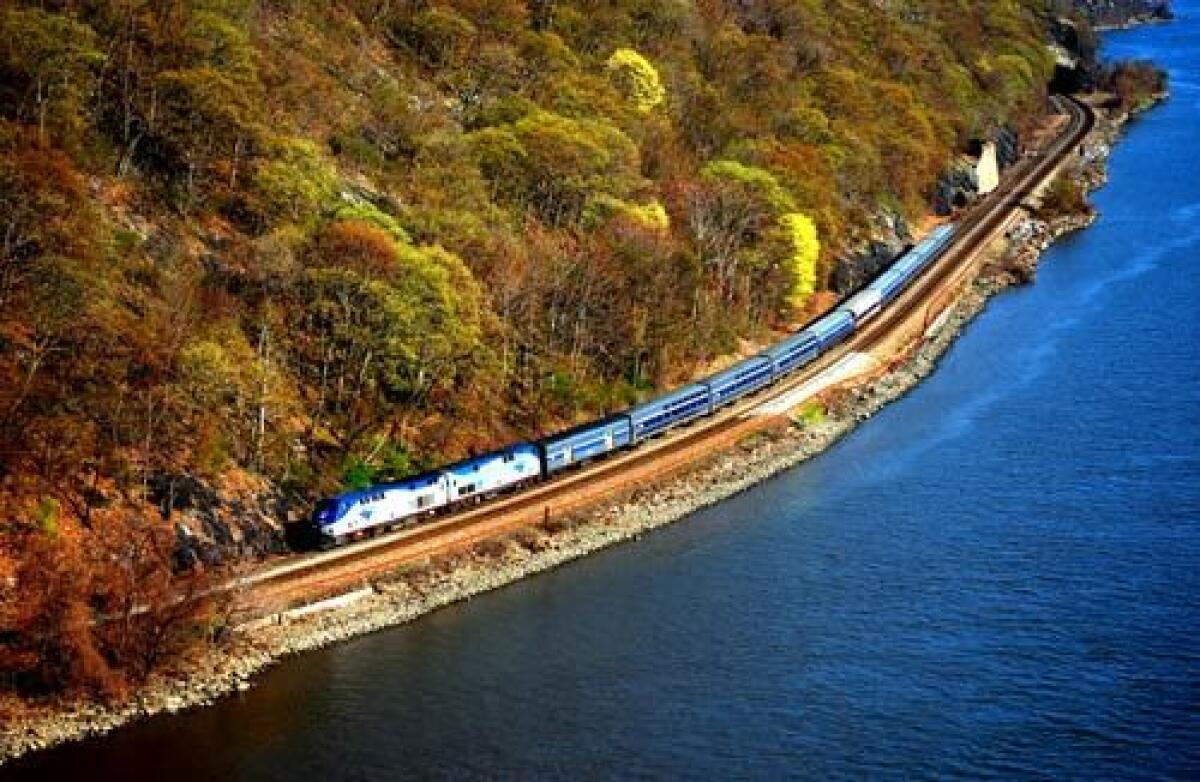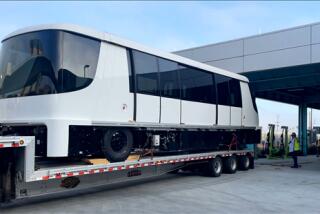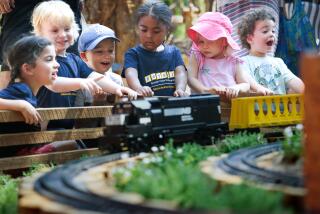All aboard: America by Amtrak train

Comfortably settled in ClubAcela, the first-class lounge at New York’s Penn Station, I considered the folder of Amtrak sleeping car tickets much as I would money in the bank: a promise of good times ahead. I would travel on the Lake Shore Limited to Chicago, the Empire Builder to Seattle and, finally, the Coast Starlight to Los Angeles. These trains, two of Amtrak’s best and one of its most improved, would show me a huge slice of America for the next week.
During my 3,582-mile journey in March, the scenically mundane mixed in with the magnificent, and that was fine with me. There were books to read, people to meet, naps to take. Both urban and small-town America scrolled past my windows, along with less-peopled spaces in between. The most spectacular — the Hudson River, the Rockies and the Cascades, Puget Sound, the Pacific — proved unforgettable.
Most of Amtrak’s long-distance trains use double-deck Superliner equipment, but those cars won’t fit through the tunnels into New York City, so overnight trains fanning out from there — to Florida, New Orleans and on two routes to Chicago — use single-level equipment. Sleeping cars are Viewliners, so named because the two levels of windows provide views from upper and lower berths. Dining cars are in the Heritage Fleet, a creative euphemism for old. Still, I find them perfectly functional, even attractive, and they are a source of nostalgia for longtime train riders.
I’ve been a train rider all my life. Beginning with trips back and forth from New Jersey to Utah in my youth , I’ve spent hundreds of nights in sleeping cars on six continents, and I’m certainly a train buff, perhaps even a borderline “foamer,” the gently derisive term for enthusiasts so crazy about trains that we foam at the mouth.
At the beginning of this journey, the tracks paralleled the Hudson on the 141 miles to Albany, N.Y., and I saw familiar sights of which I never tire. There was a run of beautiful bridges: the George Washington, the Tappan Zee, the Bear Mountain, the Mid-Hudson and, in Poughkeepsie, a leggy railroad bridge, long abandoned but reopened just last year as a pedestrian walkway. There was West Point, looking formidable, and the 1850s military surplus warehouse Bannerman Castle, crumbling. Breakneck Mountain. Lighthouses. The route guide I’d found in my roomette (all the trains I rode had them) told me about this, plus much more. My roomette — a small compartment with facing seats that make down into a narrow berth. — was comfortable for me as a solo traveler.
In Albany, I went to the diner, built in 1957 for the illustrious North Coast Limited (then a competitor to the Empire Builder, my next train). Recently refurbished, it felt fresh. My lamb shank dinner was just fine — as was my omelet with bacon and a biscuit the next morning.
West of Chicago, it’s a bigger and better Amtrak world. At Union Station, my wife, Laurel (she made the balance of the trip with me), and I walked along an impressive string of tall, gleaming Superliners, searching for our sleeper, No. 731, the New Hampshire. (Naming sleeping cars is a long-standing railroad tradition.)
We found it and climbed the stairs to our upper-level bedroom — like “roomette,” an official Amtrak designation. Because it was a two-night journey, we had sprung for this relatively posh accommodation: a chair, table, sofa (which can be turned into an oversized lower berth), an upper berth that folds down, a basin in the room and an annex with a toilet and shower. (Because showering soaks the annex, we used the commodious private shower on the first level.)
Dorothy, our car attendant, was on the job from the moment we arrived at our sleeper’s vestibule door shortly before the 2:15 p.m. departure. She helped with the luggage. She brought mimosas to our room, and she always struck the right balance between friendliness and professionalism.
Dorothy was new to Amtrak, having been hired in June 2009, “the first time Amtrak had hired in years,” she said. Among hundreds of applicants, only eight were chosen, and Dorothy, who had been a restaurant manager, was happy to be one of them.
We whiled away the first afternoon watching the Illinois and Wisconsin countryside from our seats in the Sightseer Lounge — a bright, airy car with broad, high windows and skylights in the ceiling shoulders. About the time we reached the Wisconsin Dells, dusk had darkened into evening and our thoughts had turned to cocktails and dinner.
Amtrak dining-car service has always been an up-and-down proposition. But the Empire Builder’s amenities included linen and china in the dining car. The menu, somewhat train-specific, offered plenty of tasty options for two dinners, and lunch and breakfast as well. Our dinner favorites were steaks and spare ribs. For lunch, I chose creamy beef and ale soup, and Laurel ordered a salad with apples, blue cheese and walnuts. The next morning, we awakened in North Dakota to a whiteout. At first we thought it was a blizzard, but it turned out to be heavy fog. Roads were slick with rain. By lunchtime, patches of blue had appeared, and in midafternoon, the sun reflected off the remaining snow , scribed by zigzags of game tracks. Backlighted, leafless trees seemed bizarre, capering dancers, arms akimbo.
By then, however, not everything was bright. All the toilets in the sleeper car — the private ones in the five bedrooms and the three public ones — had failed. Chagrined but helpless, Dorothy held out little hope of repair, and she was right, but public toilets in the next car were just a few steps away. (She suggested we complain to Amtrak, which we did, and received a $100 voucher for future travel.)
We were cheered by the midafternoon wine tasting in the diner (complimentary for sleeping-car passengers), hosted by Tanner, from the same training class as Dorothy. There were three wines and three complementary cheeses, and Tanner ran a trivia contest to give away the wine remaining after the tasting. “What states have capitals whose names begin with the same letter as the state?” he asked. Dover, Del., was the toughest answer.
Dorothy once again shone on the last morning of this leg of the journey , when the diner was closed hours before our arrival so the crew could get it packed away, an all too typical practice on Amtrak. She said she could bring us something from the diner. We selected biscuits, butter and honey, to which she added orange wedges (coffee and juice are always available in Amtrak sleepers), then set us up in an adjacent bedroom while she made up ours. The traverse through the Cascades while eating breakfast was a highlight, especially because we had passed Glacier National Park after dark.
Next came the Seattle-L.A. Coast Starlight, arguably Amtrak’s best train, primarily because of the Pacific Parlour Car, a lounge and dining space provided exclusively for sleeping-car passengers. No other Amtrak train offers this. These cars — veterans that ran half a century ago on Santa Fe’s El Capitan and San Francisco Chief trains but rebuilt and refurbished — have three sections: a parlor space with swivel chairs, a cocktail lounge with banquettes and a dining area with tables that might serve four but are generally assigned to couples.
We were just settling in after leaving Seattle when chef Dion passed through the car and introduced herself.
“You’re going to have a beautiful trip,” she said.
Instead of the dining car, though, we chose to have most of our meals in the quiet and intimate Pacific Parlour Car, though the menu was limited. It became our home away from home for meals, for sightseeing (Puget Sound, the mountains of Cuesta Pass into San Luis Obispo, and the grand finale, the Pacific Coast at sunset) and for a wine tasting ($5 charge, and not quite as much fun as the Empire Builder’s).
As we were packing up our things on the approach to Los Angeles, chef Dion poked her head into our roomette. “Thanks for riding with us,” she said. “Come back again.”travel@latimes.com
More to Read
Sign up for The Wild
We’ll help you find the best places to hike, bike and run, as well as the perfect silent spots for meditation and yoga.
You may occasionally receive promotional content from the Los Angeles Times.






